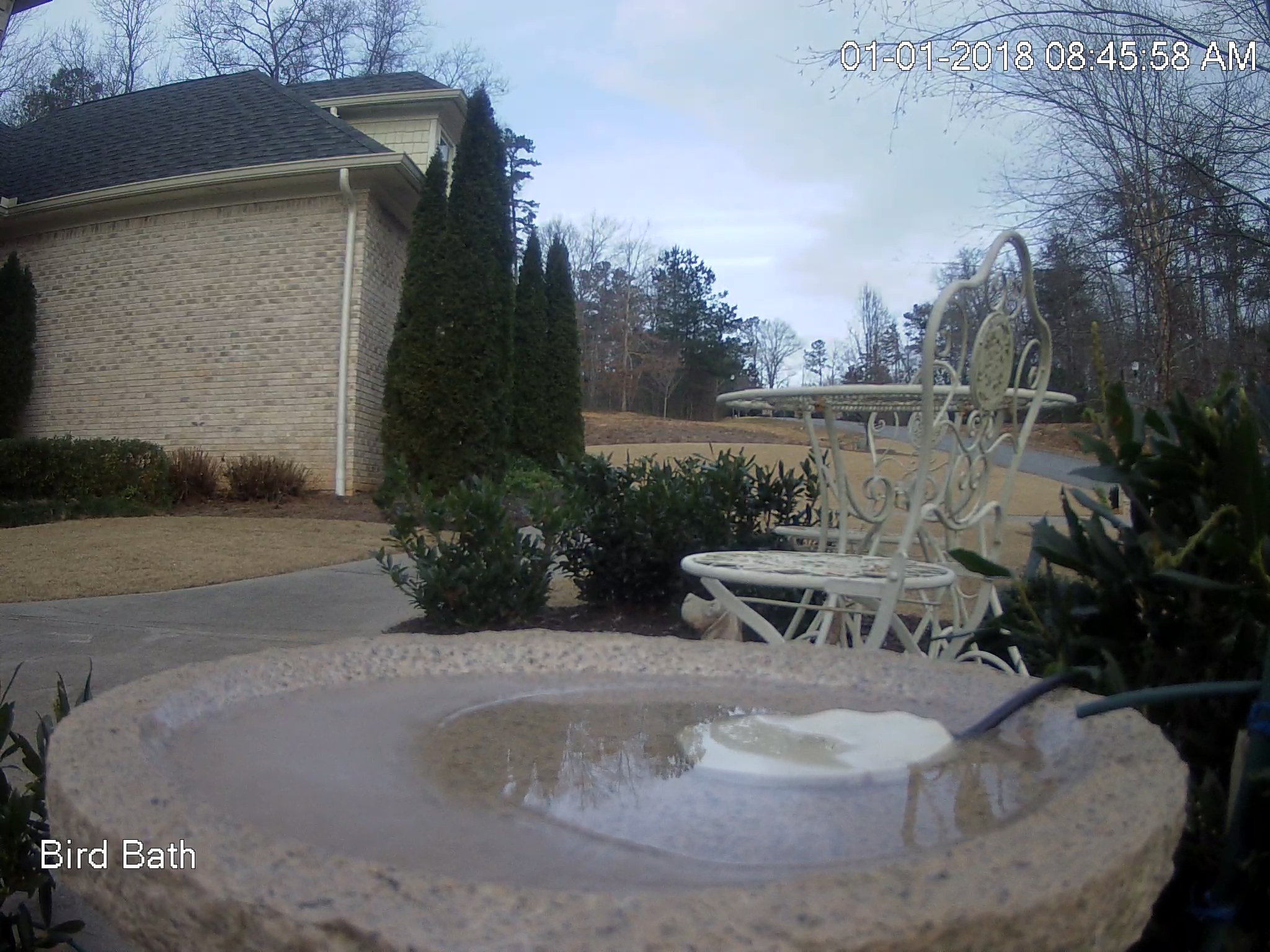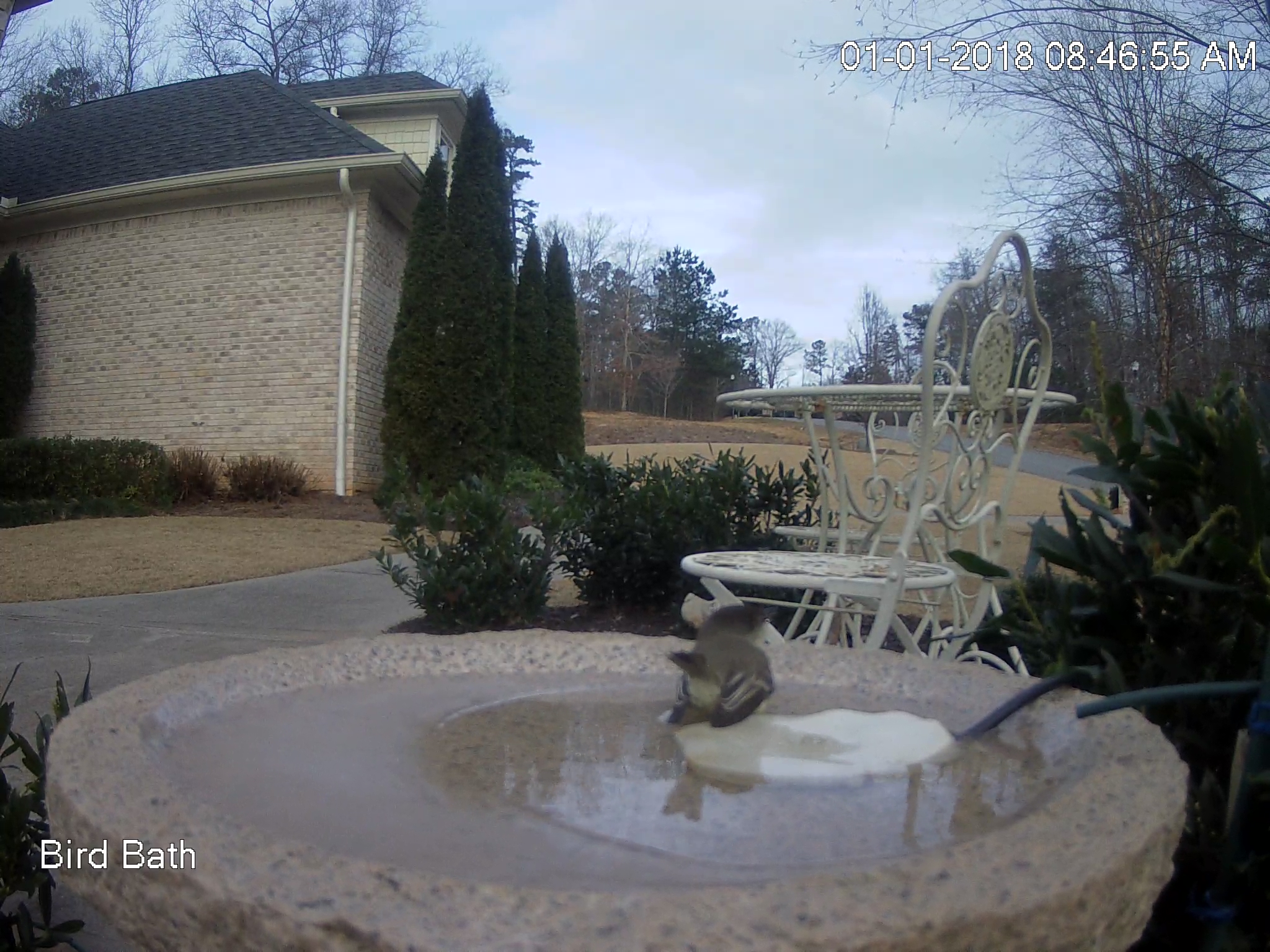With Georgia's January temps in the teens, I'm going to interrupt the "Nesting Challenges Series" once again to share some cold-weather scenes.
In this post, I'll start with telling the story of the Eastern Phoebe and the birdbath. I keep a de-icer (heated disk) in my birdbaths so birds can have access to water even when temps reach freezing (see photo). The Phoebes seem to have figured out that these de-icers are a source of warmth. I've seen them just perch, for an extended period of time, on the rim of a specialized birdbath in which the entire bowl is heated. You will see the Phoebe in the picture takes it one step further -- appearing to warm her butt on the de-icer.

Birdbath De-icer

aka Butt-Warmer
Eastern Phoebe Gets Cold Feet
I was enjoying the live video ... until ... the Phoebe reminded me of a lesson my Minnesota mother taught me many, many years ago. Never, ever touch a frozen metal part with a moist body part.
There's a bit of freaking-out in this video, but it is quite impressive to watch the Phoebe remain calm while figuring out a solution -- applying a steady-pull to her dilemma. I don't seem to recall an equal calm when, at age 5, I tested my mother's wisdom -- my tongue, painfully-frozen to the swing set.
A Bit of Bird Anatomy
It is curious how, normally, songbirds can perch on very cold surfaces without apparent distress. This is, in part, because they have no sweat glands. It is also because their feet are largely made of bone and covered with "scales". In addition, although birds are warm-blooded, their feet have a very minimal blood flow -- making their feet, essentially, cold-blooded.
Here's the fascinating part about a bird's foot-design, though: The blood that does flow to/from a birds foot does so in a web formation -- with the arteries carrying warm blood from the bird's heart woven in a mesh formation with the veins carrying cold blood away from the feet. Thus, the cold blood from the feet is warmed before making its return to the bird's heart.